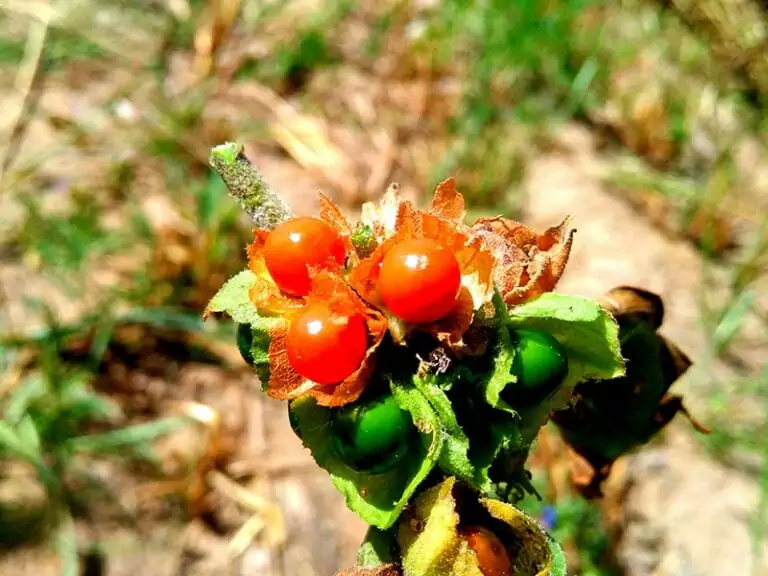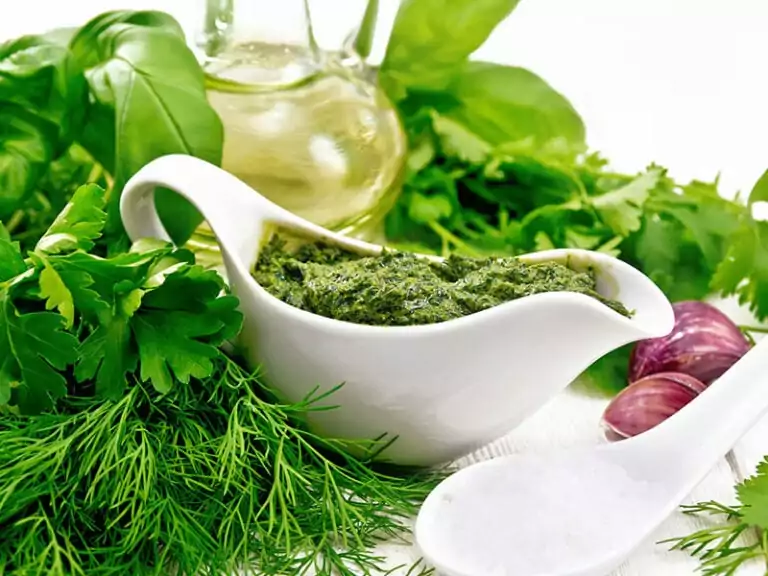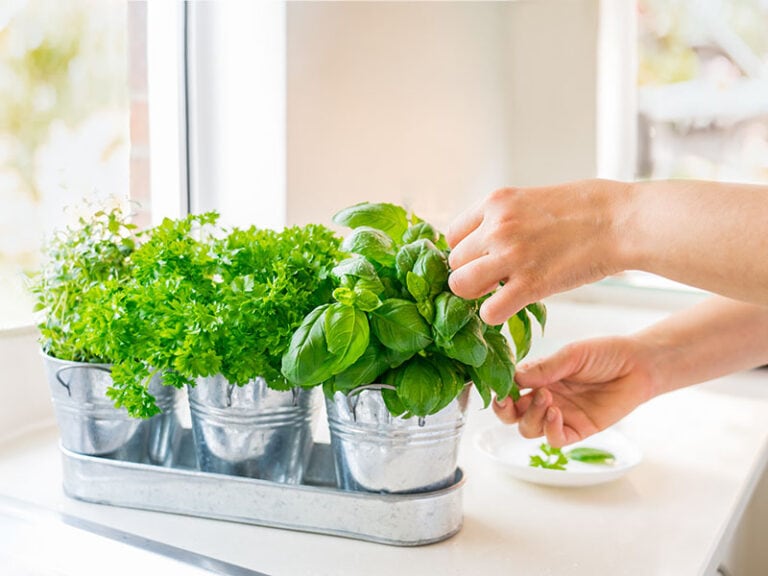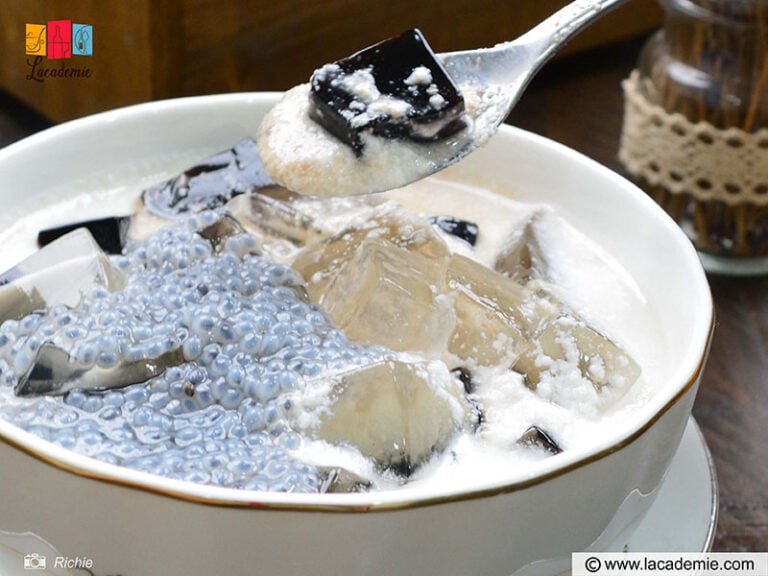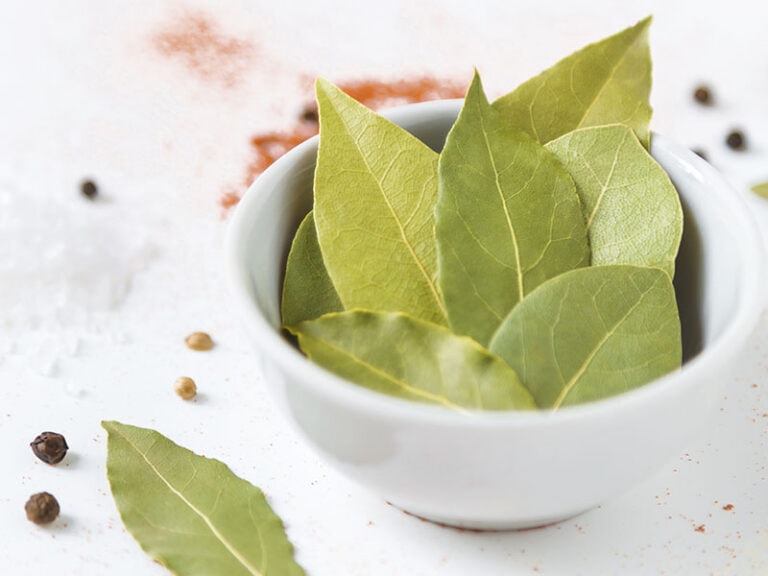Basil vs. oregano is a never-ending discussion among seasonal foodies and newbies alike. Experienced food lovers can’t agree on which one is better, while new home cooks find it hard to differentiate the two.
Regardless of the group that you belong to, if you’ve clicked this post, I’m sure that you’re expecting to learn a thing or two about basil and oregano. Don’t worry; you won’t be disappointed.
Keep scrolling to discover all the vital information regarding the two world-renowned herbs and a handful of excellent ways to cook them.
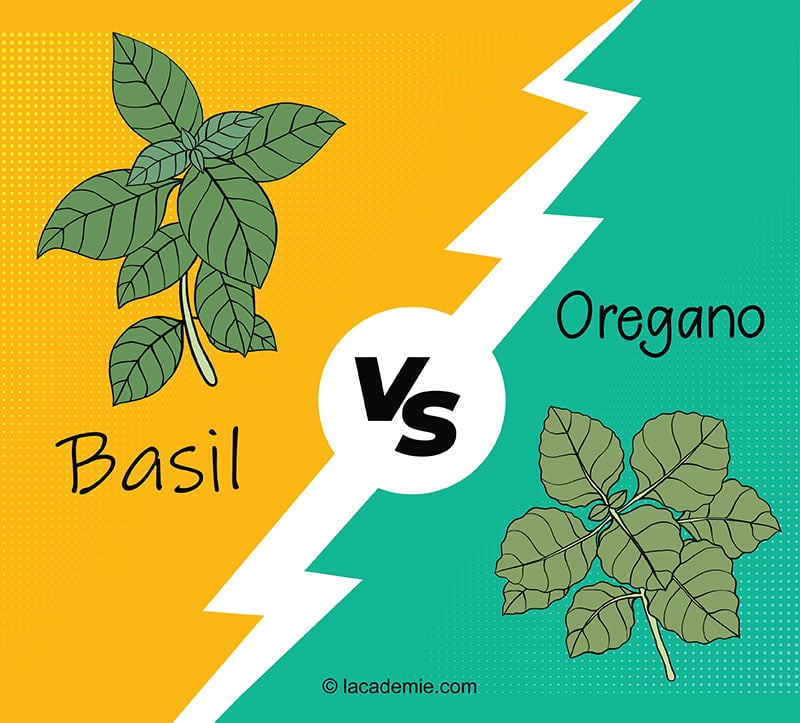
Don’t Miss These Facts About Basil
If you’re familiar with Italian cooking, basil is certainly not something new to you. This well-known seasoning herb is a member of the mints family (or Lamiaceae, as the experts would call it).
You might be shocked to know that there are somewhere between 50 and 150 basil cultivars, a majority of which are annual plants. Some basil species are perennials, though. (1)
While basil is commonly used as a culinary herb, some cultivars are also treated as a medicine and even have religious meanings. For example, holy basil which is different from ashwagandha is very important in Hinduism.
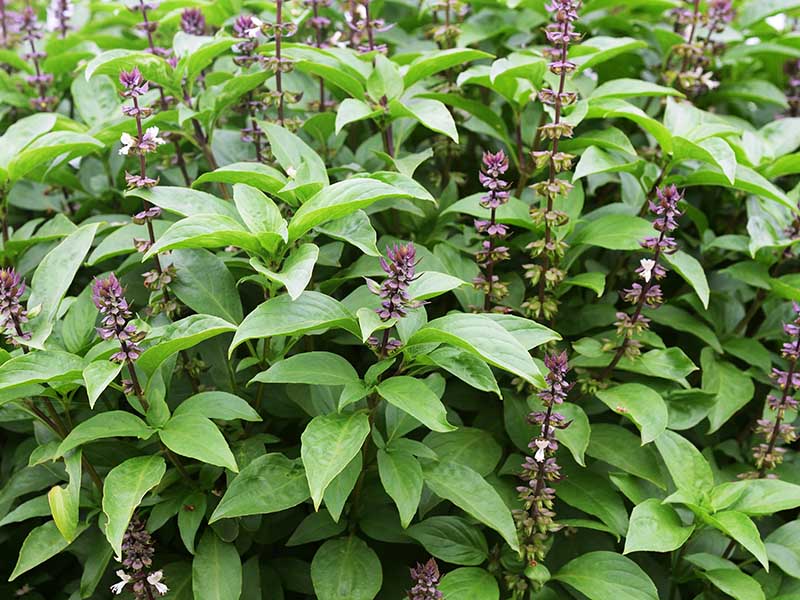
When buying basil in a regular grocery store, you’ll be most likely to find sweet basil, Genovese basil, Thai basil, or cinnamon basil.
You have two choices for buying basil which is fresh and dry herbs. Both are great if you know the correct way to use them. However, many people prefer fresh herbs since they taste and smell more vibrant.
Check out this quick review of 3 popular basil cultivars.
Oregano And What To Know
From a botanical standpoint, oregano is a cousin to basil since both of them belong to the minty Lamiaceae family. You may also hear some people call it “wild marjoram”. Regardless of the name, oregano is a prominent culinary herb in Mediterranean cuisine.
Similar to basil, there is a wide collection of oregano species (over 40, to be more exact). The most commonly used variety, though, is the one from Greek. All oregano cultivars are perennial plants, meaning that they will live for at least 2 years.
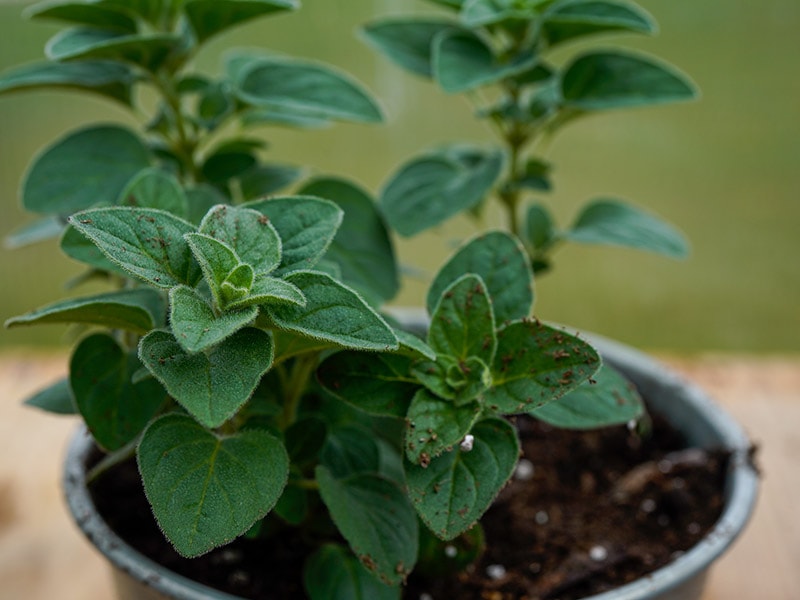
Oregano also comes in dry and fresh states. I’ll be discussing the differences between these two forms in more detail later, so keep reading if you want to know more!
Here’s a fun fact about this herb’s name. The term “oregano” appeared in the mid-18th century and is translated to “the brightness of the mountain”. (2)
More tasty oregano varieties to widen your choices.
Basil Vs. Oregano – A Detailed Comparison
After some general information about oregano and basil, it’s time for a more in-depth comparison between these two herbs.
Natural Habitat
Basil first appeared in the warm areas ranging from Southeast Asia to Central Africa. On the other hand, oregano is a Mediterranean-native plant that was later brought to other temperate regions of the Northern Hemisphere.
These days, however, you can find both of them in pretty much any part of the world.
Appearance
Apart from tasting, the easiest way to differentiate oregano and basil is by appearance. Once you know what they’re supposed to look like, telling the two apart will be easy as pie.
Basil
Basil yields oval leaves that curl downward and can grow up to about 4.5 inches (about 11 cm). Although you may commonly see basil covered in dark green, there are also red and purple herbs.
When fresh, basil leaves will be glossy and smooth. That said, their color will turn darker once they are dried.
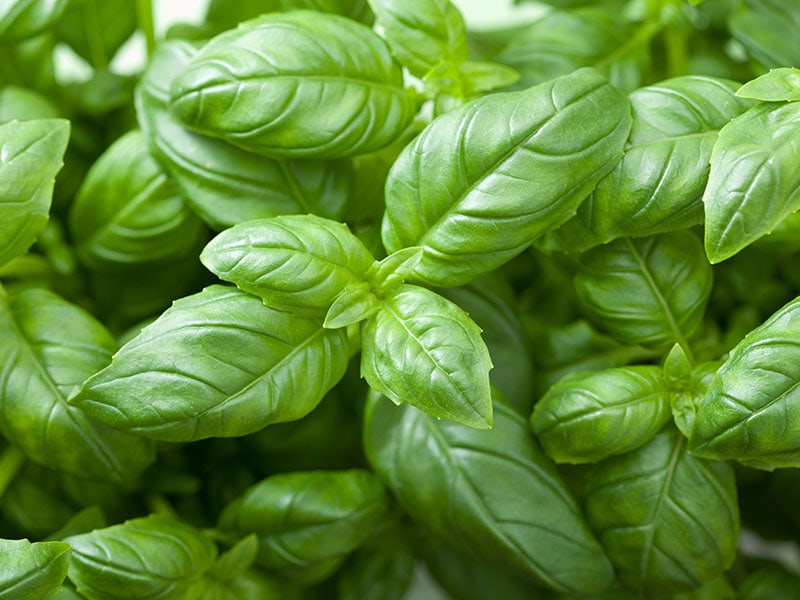
If you have the chance to grow or see a basil plant, you’ll see that it produces petite, often white flowers. The flowers don’t come bundled together but rather grow separately throughout the light green stems.
Oregano
In general, oregano leaves are smaller than basil leaves as they only grow to approximately 2 inches (about 5 cm). They are shaped flat like a spade and have tiny hairs on the edges.
A healthy leaf should be olive green, regardless of the cultivars. If the color turns purple, you might want to check for nutrition imbalances, inappropriate temperature, and moisture. Pruning the wrong way can also lead to leaves changing color.
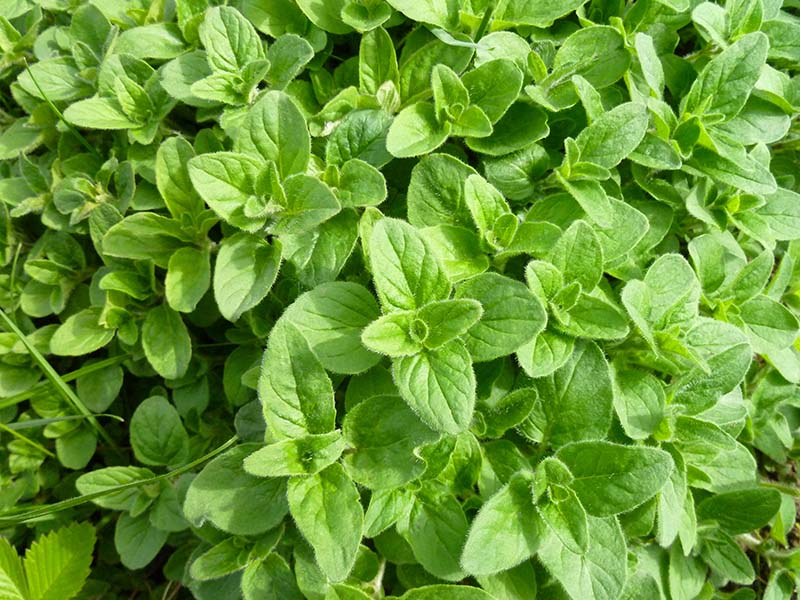
On the other hand, oregano’s flowers are naturally purple (sometimes light pink) and grow in bunches. They will appear on top of a dark green or brown-ish hairy stem.
Taste And Aroma
You might want to pay great attention to this part since it covers the most important factors of every seasoning herb: flavor and odor. In this apartment, both basil and oregano have their own distinct characteristics.
Basil
The flavor features of basil differ from variety to variety. Due to the extremely high number of cultivars, it’s hard to describe the exact flavor and odor of this herb.
To make things simpler, think of basil’s flavor profile as a mixture of sweet and savory with traces of mint, pepper, clove, and anise. Depending on the cultivar, they can smell fresh and mint-like or more citrusy and spicier.
But don’t think that there’s nothing to set basil and mint apart just because it tastes a little minty! The more you learn about spiced herbs like oregano, mint, or basil, the more surprised you’ll be at how unique each of them is.
Oregano
As for oregano, it is a grassy and earthy herb with some bitterness here and there. You’ll also feel some minty freshness hidden in-between the bold taste. Avoid eating too much oregano at once since doing so can leave a somewhat acidic aftertaste on your tongue.
Fresh And Dry
While you can purchase both basil and oregano in dry and fresh states, some people might prefer one over another. To be honest, there’s no clear winner between fresh and dry basil or oregano. Your best bet is to find the most suitable form for you.
Basil
The main dissimilarity between fresh and dry basil lies in the flavor. Once deprived of its moisture, basil will taste more concentrated, and the mint notes are taken up a notch. On the flip side, the herb will lose most of its anise flavor.
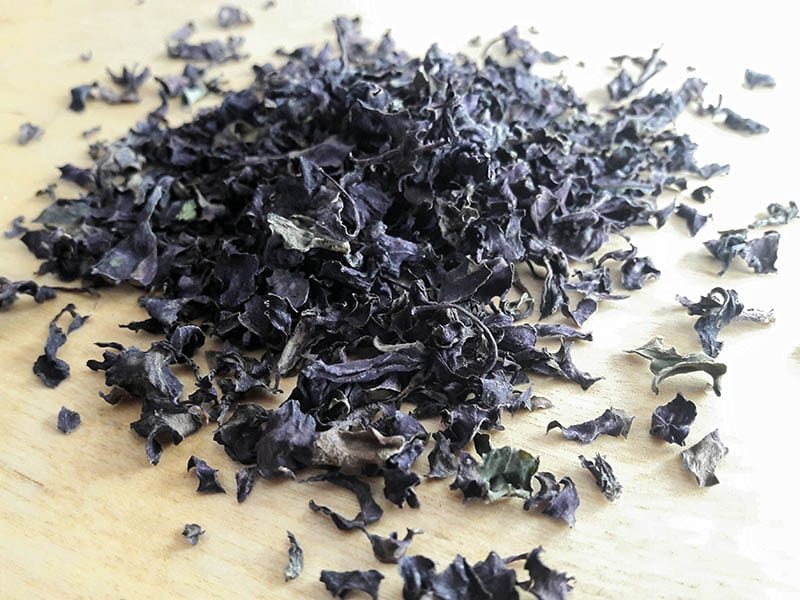
In addition, dry basil is crumblier than fresh ones and is also darker in color. As a result, you’ll need to be careful when using the dehydrated version in recipes where the texture and color of this herb might affect the dish’s quality.
Oregano
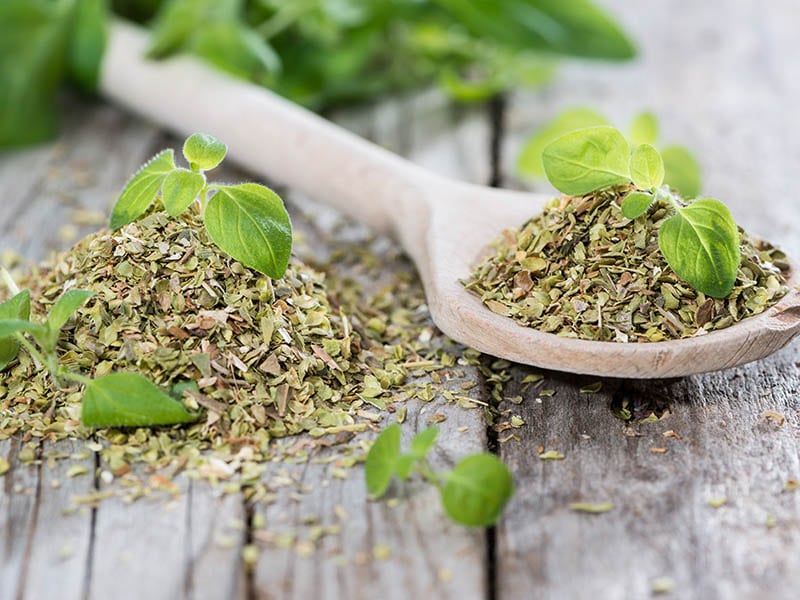
One special thing about oregano is that its flavor profile remains mostly unchanged even after drying. While some people love to use dried oregano instead of fresh ones as they taste more subtle, others choose newly chopped herbs due to their vibrancy.
If you’ve tried oregano before and think that they are too pungent, it’s likely that you’ve eaten fresh oregano.
Notes And Tips
Dried and ground basil and oregano can look very similar. To prevent any unwanted confusion, you should always label your herbs’ jars. If all things fail (e.g., you forgot to stick a tag on them), your best bet is to rely on your nose.
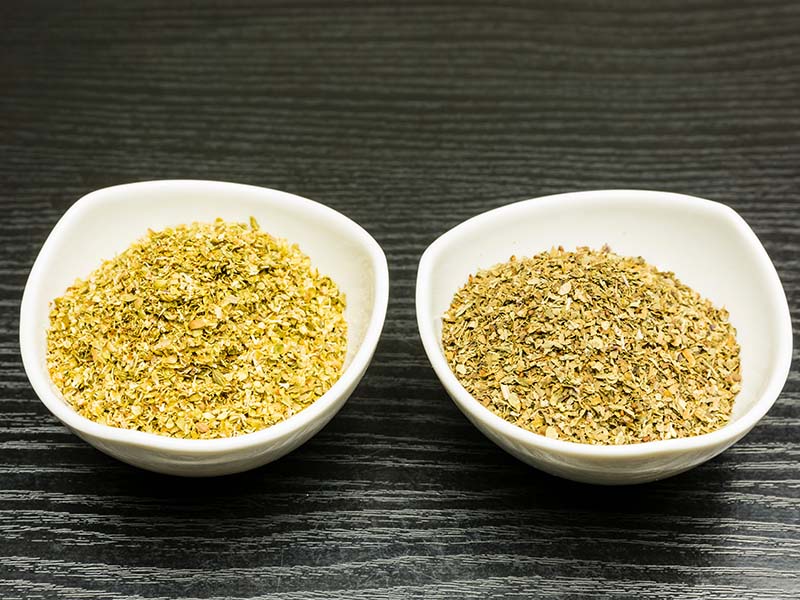
One trick to bringing out the aromatic nature of dried herbs is to rub (or crush) them between your hands to warm them up.
In addition, you can substitute fresh basil or oregano with their dried counterparts in a 3:1 ratio. In other words, 1 tablespoon of fresh herbs equals 1 teaspoon of dry ones.
You should also remember that dry herbs will taste the best when added at the early stages of cooking, while fresh ones are better added toward the end.
Nutritional Value & Health Benefits
Although you can rest assured that eating basil and oregano won’t bring you any harm, you should also know that there’s a difference in their nutritional values. For a more detailed comparison between 100 grams of dried basil and oregano, check out this table.
As for their potential health benefits, both basil and oregano have great anti-inflammatory potency. They can also help reduce the risk of heart diseases and cancer. Plus, they are a relatively rich source of antioxidants.
Some basil varieties, namely holy basil, possess the ability to reduce stress, which is why it’s often used in Ayurveda – a long-lived medical practice.
Main Uses In Cooking
After reading all the praises about these two herbs, you must be very curious to know the best way to make use of them. Well, I won’t keep you waiting any longer. Here are some common uses for oregano and basil.
Basil
As mentioned above, basil is a staple in Italian cuisine, but the “boot-shaped” nation is not the only where this herb is widely loved. People in Asian countries like Thailand, Vietnam, Indonesia are also masters in cooking with basil.
If you’re new to basil, a foolproof way to cook them is to pair the aromatic herb with tomatoes. Tomato-basil salads, tomato-basil sauces, you name it, this amazing combination will ensure that your dish comes out delicious.
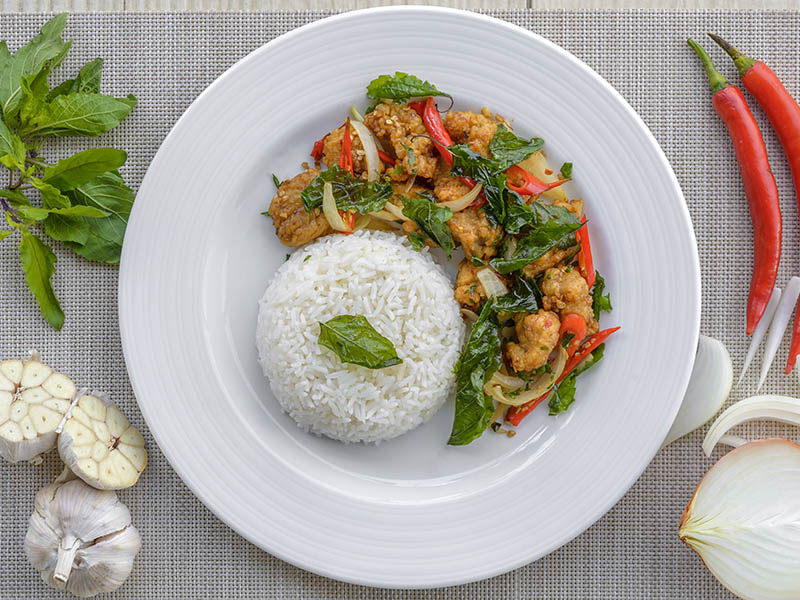
In addition, basil is an overall excellent seasoning for vegetable-based dishes and works great in fish and poultry recipes. It’s also an excellent alternative to Italian seasoning, especially when you mix dried basil with dried oregano.
And did I mention basil tea? You have got to try brewing tea with basil whenever you have the chance.
Oregano

When it comes to cooking with oregano, no one does it better than Mexican, French, Italian, and Spanish people. Like basil, you can pair oregano with tomatoes for a simple but mouth-watering combination, or better yet, try them in olive oil-based dishes.
You can make incredibly tasty oregano vinaigrettes or use the herb in conjunction with olive oil to marinate beef, chicken, or lamb. In addition, dry oregano is also extracted to make oregano oil, which provides plenty of health benefits.
Learn 14 ways that oregano oil can make you healthier.
It would be a big mistake not to mention pizza in oregano’s cooking utilization. There’s a reason why this herb is sometimes called the “pizza herb”!
Possible Substitutes
What if you run out of basil or oregano in the middle of cooking? Does this mean that your dish is now ruined? Don’t worry; there are plenty of viable alternatives for the two of them. Although your dish won’t taste as expected, it will still be palatable, just in a different way.
Basil
Three candidates for replacing basil are mint (for obvious reasons), tarragon, and oregano. The 1 to 1 ratio is applicable for all of them (fresh or dried), though you might want to stay away from spearmint as it’s much sweeter than basil. Instead, go for peppermint.
Be mindful that it’s not a good idea to swap out basil for any other above herbs if your recipe is an Asian one. To get the best results, stick to Mediterranean or Italian cooking only.
Oregano
As for viable oregano alternatives, you can pick among basil, fresh thyme, marjoram, or parsley. Note that basil, thyme, and parsley (replaced in 1:1 ratio) will work the best in Mediterranean or Italian recipes.
On the other hand, marjoram will be a better choice if you’re making a Mexican dish. Swap ¾ the amount of oregano required with marjoram. For example, if the recipe asks for 2 teaspoons of oregano, you can switch them with 3 teaspoons of marjoram.
Dry Basil And Oregano Brands To Look For
If you can’t find a good way to store fresh basil and oregano, or simply prefer the taste of dry herbs, I have some awesome brand recommendations for you.
For basil, check out McCormick Culinary Basil Leaves that promise a “pure basil flavor”. Anthony’s Organic Dried Basil is another must-try choice if you’re into organic, non-GMO goods.
If you prefer freeze-dried herbs, Litehouse Freeze Dried Basil offers a high-quality option.
When it comes to dry oregano, Badia Oregano Whole is among the highest-rated brands on Amazon, with an average of 5 stars across 1,125 ratings. For full-on organic herbs, you can’t go wrong with Simply Organic Oregano Leaf Cut.
In addition, Amazon also has its own oregano brand, which is called Happy Belly Mediterranean Oregano.
You Won’t Be Able To Resist The Following Basil Recipes
Are you ready to make delicious basil-based dishes? If the answer is yes, then let’s get right into cooking!
Mango And Basil Salsa
This mango and basil salsa is an outstanding party dish that everyone can enjoy. The sweetness of mango mixed with fresh chili’s (or garlic paste) spiciness makes for an addicting bite.
If you want to, you can also add kiwi to your mango-basil salsa.
Lemon Basil Chicken
Tender and juicy chicken is what you need after a long day at work. One bite of this delicious lemon basil chicken will take you right to gastronomic heaven! The best part? It’s extremely simple to make!
Tomato And Basil Pie
If you’re too tired of using tomato and basil in pasta or sauces, why don’t you try this wonderful pie. Creamy, rich, and delightful, this recipe is an exceptional way to freshen up a classic food combination.
Time to make your next favorite comfort food – tomato and basil pie!
Simple Oregano Recipes That You Should Definitely Try
After basil, it’s time to give oregano some love. The following recipes are very straightforward, yet they will take your meals to the next level.
Baked Tomato With Oregano And Cheese
Don’t be taken aback by the seemingly complicated looks. Cooking this amazing appetizer will only take you about 15 minutes. You can even think of it as a miniature pizza, only without the crust.
Greek Salad
Oregano will always taste good in a salad, no matter what vegetables you choose to throw in. Feta cheese is an essential component in Greek salad that makes the dish creamier than ever. To make your salad more nutritious, add some quinoa to the mix.
Oregano Tea
It can’t get any simpler than a cup of oregano tea. Seriously, even if you’ve never cooked before, there’s no stopping you from brewing tasty and healthy oregano tea. You can also brew a large batch and chill in the fridge to enjoy for a whole week.
You will want to drink oregano tea every day after this.
Using Basil And Oregano At The Same Time? Why Not!
If you’re wondering if there’s a recipe that uses oregano and basil together, then the answer is yes. In fact, there are quite a lot of them! Here are some that I find extremely delectable.
Mixed Herbs Pasta
Imagine how palatable a pasta dish will be. It is infused with not just one or two but five aromatic herbs! Apart from basil and oregano, you can use any combination of parsley, rosemary, mint, chives, and thyme. For more flavor, add some goat cheese or swordfish.
Spinach And Summer Herbs Pesto
Is anyone here bored of basil-only pesto? You can give this long-live condiment a breath of fresh air by throwing in plenty of summer herbs and some spinach. Delightful and healthy, that’s what this summer herbs pesto is!
Basil And Oregano Bruschetta
Bruschetta is a flavorsome starter dish (or antipasto as the Italians would say) that everyone in the family will love. The basis of this recipe revolves around the old-but-gold basil, oregano, and tomato combination. You can top it up with some grated cheese for extra creaminess.
FAQs
Give this FAQs section a read if you still have more questions about basil and oregano. Even if you don’t, I suggest reading it anyway since you might find them beneficial in the future.
Try Basil And Oregano Today!
If you’re still hesitant to give basil and oregano a try, I hope that this post has changed your mind. Trust me; adding these two herbs into your cooking will be a decision that you’ll never regret.
Comment your thoughts on oregano and basil below, and please help spread this article to more readers by sharing and liking.
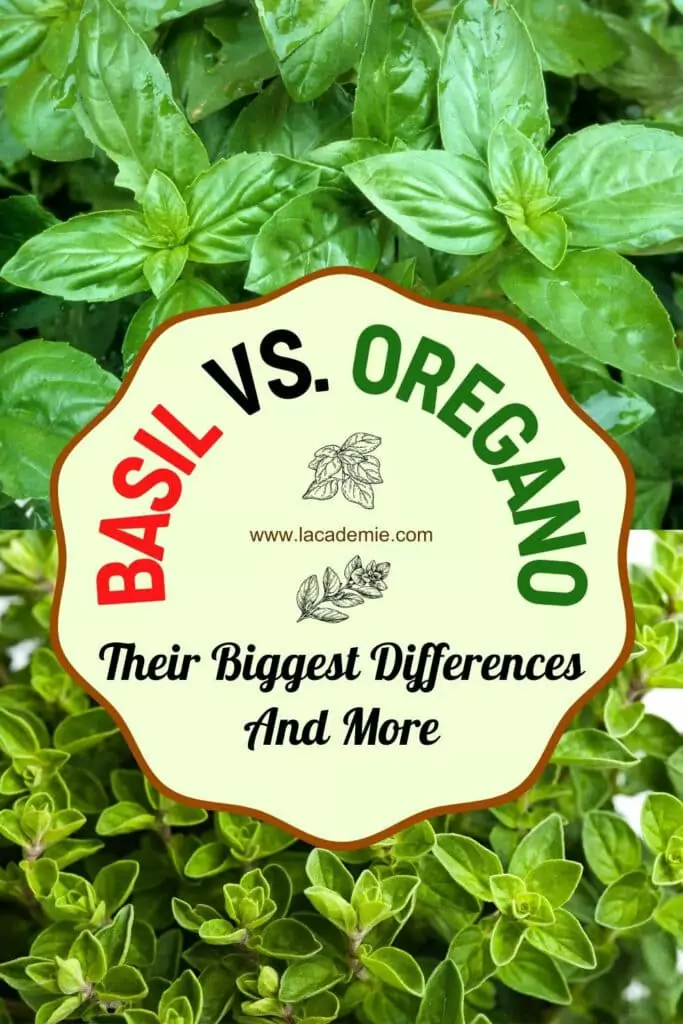
References
- Contributors to Wikimedia projects, (2003). Basil – Wikipedia.
- Contributors to Wikimedia projects, (2001). Oregano – Wikipedia.
- FoodData Central [online]. (no date). FoodData Central.
- FoodData Central [online]. (no date-b). FoodData Central.

